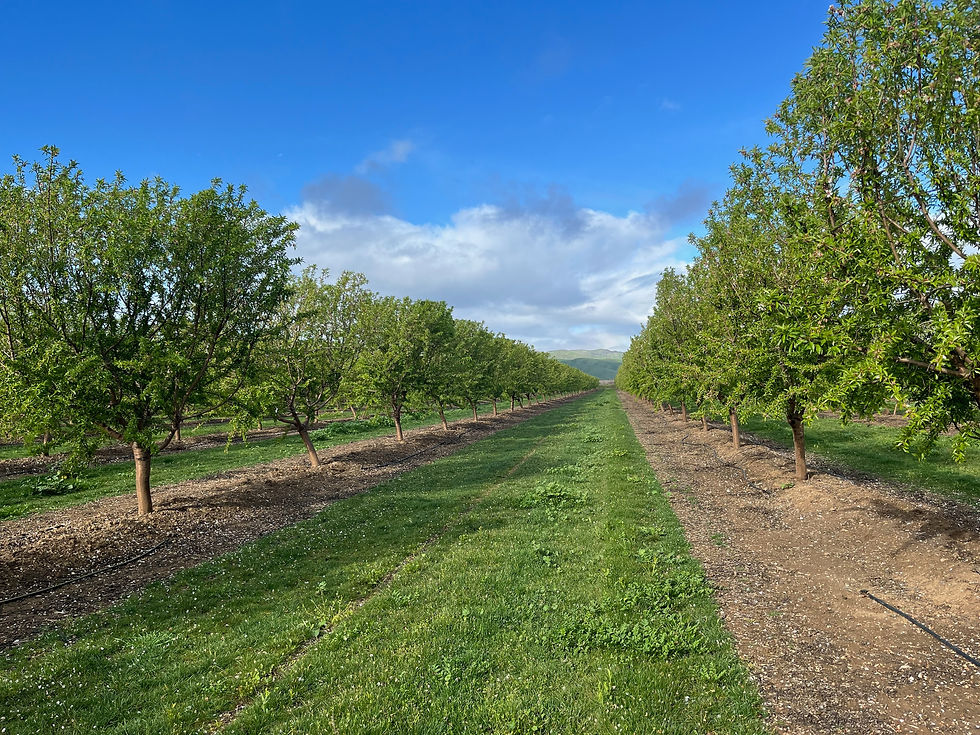

The Context
Water scarcity threatens sustainable agriculture in California. During the last decade alone, historically severe droughts have led to the current unprecedented water shortages. Under projected changes in climate, droughts of greater severity and duration will exacerbate this situation.
California produces 80% of the world’s almonds, which require consistent water supplies for irrigation. In response to these challenges, almond growers and organizations are considering a myriad of management strategies to save water and mitigate climate change.
The Tree-crop Remote sensing of Evapotranspiration eXperiment (T-REX) aims to identify water and orchard management opportunities to maximize water use efficiency and carbon sequestration in almonds and other woody perennial tree crops. The project combines satellite, remotely piloted aerial systems, and proximal sensing technologies to retrieve key variables used to model surface fluxes and biophysical properties with the purpose of advancing our understanding of management strategies on water-carbon relationships in tree-perennial agroecosystems.
A 10% decrease in almond orchard irrigation across the state equates to the annual residential water use of 2.2 million average California households. From a carbon perspective, almond orchards could sequester ~8% of the state’s current greenhouse gas emissions by transitioning toward climate-smart practices. As such, the almond industry is uniquely positioned to both curb water-use and help to mitigate climate change while continuing to economically sustain family growers and agricultural workers.

The Goal
The goal of T-REX is to combine innovative satellite, remotely piloted aerial systems, and other proximal sensing technologies to retrieve key parameters used to model surface fluxes and other biophysical variables.
The tools developed under T-REX will have an advantage over current “business-as-usual” approaches by providing near-real-time and forecasted water use (actual evapotranspiration) information with higher spatial and temporal detail, guiding water management decisions in orchard systems with greater accuracy.
ET Models
ET Flux
Measurement
Irrigation Management
Stress
Detection

The Future
-
ET forecasting
-
Links across scales
-
Stress detection
-
Partitioning of evaporation and transpiration
-
Impacts of cover crops on carbon and water fluxes
-
Quantifying the role of advection in ET
-
Fusion of new satellite platforms and ground based sensing
-
ET and stress detection model refinement
-
Stakeholder and farm advisor training
-
Integration of commercial sensors and dashboard for precision irrigation decision making.